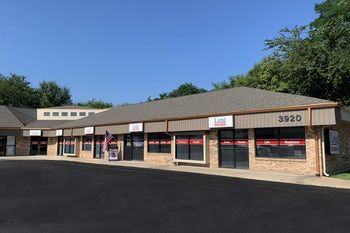Congratulations on your new car! Purchasing a new vehicle is exciting, and insurance isn’t normally the first thing on your mind. When you finally think of it, you may be overwhelmed and not sure what to do. Here are some tips.
CONTACT YOUR AGENT
First things first: You should contact your independent insurance agent to add the new vehicle to your policy. If you purchase the vehicle over the weekend – as most of us will do – your agent’s office may not be open. Don’t worry. Most auto policies provide coverage for a newly acquired vehicle for up to 30 days with the same coverage as either the vehicle you are replacing or the vehicle with the broadest coverage. If your current vehicles do not have comprehensive and collision coverages, then most policies will automatically provide those coverages on the newly purchased vehicle subject to a deductible.
Just give your agent a call on Monday to add the vehicle. You will need the year, make, model and VIN (vehicle identification number) to add the vehicle. If you have financed your car (taken out a loan or lease), you will need to provide the lender’s information, too.
REVIEW COVERAGES AND DEDUCTIBLES
GAP coverage — This is a good time to review with your agent the current coverages and deductibles on your policy. If you financed your vehicle, GAP coverage may be something to consider if it isn’t provided by the dealership or financial institution. GAP coverage – for guaranteed asset protection – protects you against losses that can arise when the compensation received from a total loss does not fully cover the amount owed on the vehicle’s financing or lease agreement. GAP covers the difference between those amounts and pays off the loan. For example, if the total loss settlement is $20,000 and you owe $25,000 on your car, GAP coverage would pay the additional $5,000 owed.
Replacement cost – The value of a relatively new car depreciates quickly, and in the event of a total loss, you may end up getting less than what you paid for the car. If your insurance company offers it, replacement cost or new car replacement may be another coverage worth considering as this coverage will reimburse you for the cost of a new vehicle of the same make and model, minus your deductible. Insurance companies have different requirements to qualify for this coverage. For example, this coverage may be extended only on an owned (not leased) vehicle, a current model, a new (not used) vehicle or a vehicle with mileage below a specific level. If you are interested in this coverage, check with your agent to see if your company offers it and whether your new car would qualify.
Deductible — Adding a new vehicle to your policy most likely will increase your premium. One way you might reduce your premium is to review your deductibles on this car and others on your policy. Selecting a higher deductible will likely decrease your premium.
Your other vehicles – Another option is to review coverage for other vehicles on the policy and, if they have comprehensive and collision coverages, determine if it’s still needed. As vehicles get older, they depreciate. At some point the premium you pay for comprehensive and collision may exceed the replacement value of the vehicle. In cases like this, you may want to consider keeping only the liability coverages.
Finally, contact your agent. He or she will see that you have the appropriate coverages to enjoy your new ride.
Coverages described here are in the most general terms and are subject to actual policy conditions and exclusions. For actual coverage wording, conditions and exclusions, refer to the policy or contact your independent agent.










